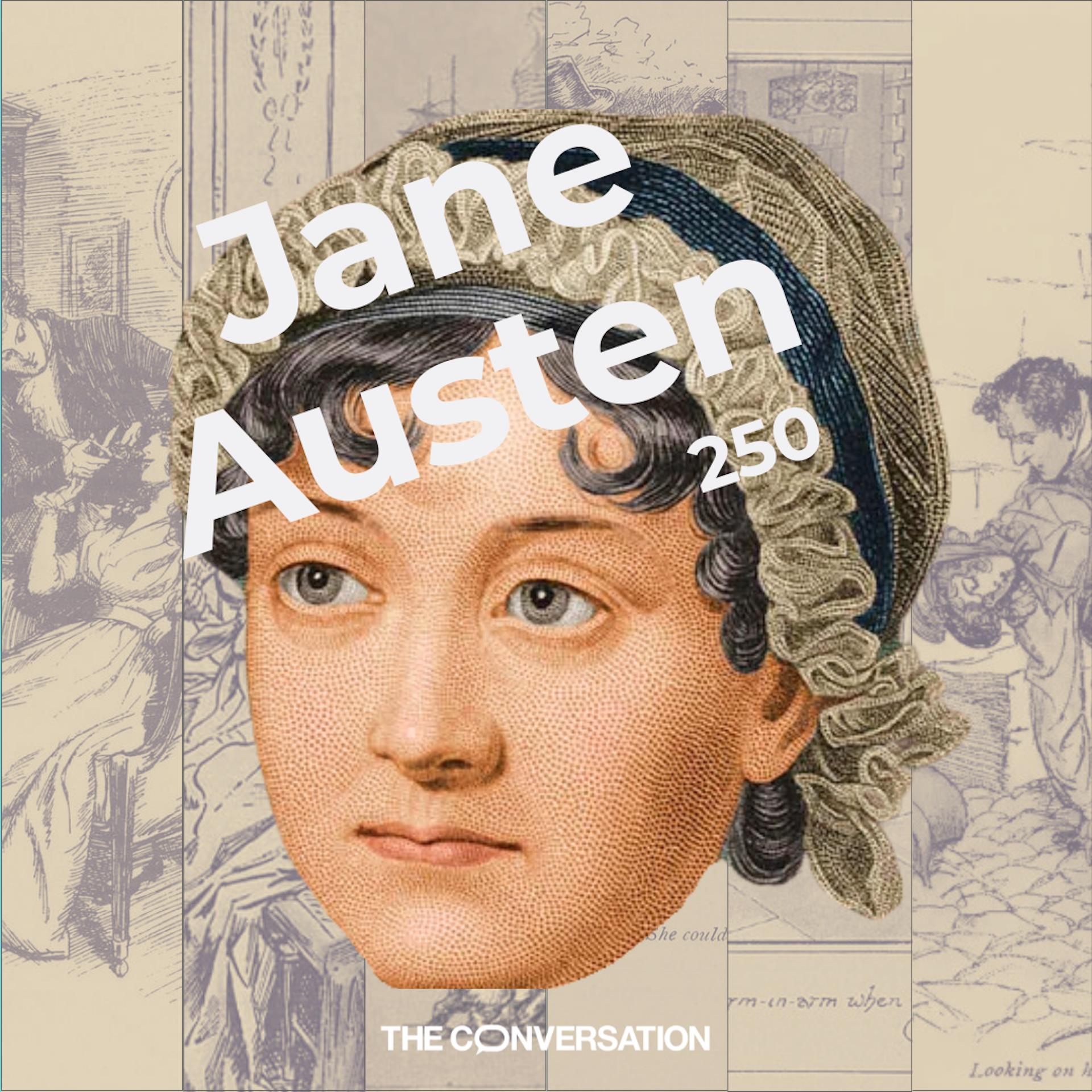
How Jane Austen's Landscapes Mapped Women's Lives
In Austen 's world, place equals power. Where a woman could walk, who she might encounter and how her movements were constrained often determined the course of her story. Tracing Austen's fictional geographies – from Bath's promenades to Brighton's dangers, Portsmouth's naval streets and the expansive grounds of Pemberley – reveals how these locations shaped women's freedoms, reputations and choices.
For Catherine Morland in Northanger Abbey (1817), Bath is both exciting and bewildering. She is“about to be launched into all the difficulties and dangers of a six weeks' residence in Bath”. The phrase parodies gothic terror while also capturing Catherine's unpreparedness for the subtler hazards of urban sociability: flattery, pretence and manipulation.
Her early walks are tentative. She dutifully accompanies Mrs Allen to the Pump Room, where they“paraded up and down for an hour... looking at everybody and speaking to no one”. The scene highlights both the possibilities and frustrations of urban walking: exposure to fashionable society without any guarantee of genuine connection.

This article is part of a series commemorating the 250th anniversary of Jane Austen's birth. Despite having published only six books, she is one of the best-known authors in history. These articles explore the legacy and life of this incredible writer.
Anne Elliot in Persuasion (1817) moves through Bath with greater clarity. Where Catherine mistakes politeness for affection, Anne recognises the city as a site of display and competition. For her, Bath represents confinement. She longs for the lawns and groves of Kellynch Hall, where she once walked freely:“She disliked Bath, and did not think it agreed with her; and Bath was to be her home.”
Bath's crowded rooms and choreographed promenades stand in stark contrast to the restorative rural landscapes Anne loves. Through both heroines, Austen portrays the city as a stage on which women must learn to navigate visibility, reputation and choice.
Brighton: risk, display and reputationIf Bath is a space of display, Brighton brims with danger. As a fashionable seaside resort, it promised excitement and opportunity, but for young women it carried real risk.
In Pride and Prejudice (1813), 15-year-old Lydia Bennet imagines Brighton as paradise:“In Lydia's imagination, a visit to Brighton comprised every possibility of earthly happiness... the streets of that gay bathing-place covered with officers.”
Lydia demands to go to Brighton in the 1995 adaptation of Pride and Prejudice.
Lydia's giddy enthusiasm blinds her to danger, and the fantasy ends in disaster. Allowed too much freedom, she elopes with a cad, Wickham, disgracing her family. Yet after the marriage is hastily arranged, she boasts:“I only hope they may have half my good luck. They must all go to Brighton. That is the place to get husbands.”
Lydia's naïve pride underscores Austen's critique of Brighton as a site of social peril. This negative portrayal was not accidental: Brighton was strongly associated with the Prince Regent and his notorious lifestyle, whose extravagance Austen quietly mocked, despite him being a big fan. In her writing, the resort embodies a world of unregulated freedom and moral laxity – a place where allure could swiftly lead to ruin.
Portsmouth: naval life and restricted mobilityIn Mansfield Park (1814), Fanny Price's return to her family home in Portsmouth reveals another urban geography, shaped not by leisure but precarity.
This naval town, sustained by war and colonial trade, is crowded, noisy and unstable. Unlike the protected grounds of Mansfield, where walking fosters reflection, Portsmouth's streets are chaotic and male-dominated, exposing women to scrutiny and risk.
Henry Crawford visits Fanny in Portsmouth in the 1999 film of Mansfield Park.
Fanny recoils at her new surroundings:“The men appeared to her all coarse, the women all pert, everybody under-bred.” Walking here is not liberating but“strange, awkward, and distressing״.
When Henry Crawford suggests going for a walk with Fanny, it is treated as rare and functional. Mrs Price admits her daughters "did not often get out” unless“they had some errands in the town”. Henry, wealthy and male, strolls without restriction. Fanny and her sister Susan, by contrast, can only walk under supervision.
Austen uses Portsmouth to highlight how class, gender and geography intersect to restrict women's mobility and reinforce inequality.
Pemberley: moral geography and possibilityBy contrast, the countryside walks at Pemberley in Pride and Prejudice offer Elizabeth Bennet a landscape of harmony and possibility.
Austen describes“a large, handsome stone building, standing well on rising ground״, surrounded by woods, streams and "great variety of ground”. Elizabeth and her aunt and uncle gradually ascend through“a beautiful wood stretching over a wide extent” before their first view of the house. This prompts her famous reflection:“She had never seen a place for which nature had done more... At that moment she felt that to be mistress of Pemberley might be something!”
Lizzie visits Pemberley in the 2005 adaptation of Pride and Prejudice.
Unlike the artificial grandeur of other estates, Pemberley harmonises with its natural setting, reflecting Darcy's character. Its“natural importance” conveys authenticity rather than display. Walking here is exploratory and expansive, offering shifting perspectives that mirror Elizabeth's changing emotions.
Pemberley becomes moral geography: a space whose openness and balance anticipate a union founded on respect, responsibility and freedom.
Across her fiction, Austen maps women's lives through the spaces they inhabit and traverse. Bath exposes the pressures of visibility, Brighton the risks of temptation, Portsmouth the limits of mobility and Pemberley the possibilities of harmony. Walking, whether through crowded assembly rooms, along seaside promenades or across open parkland, becomes a measure of female agency.
Austen's mapped worlds remind us that geography is never neutral. It shapes choices, relationships and power. Her novels continue to resonate because they ask a question still urgent today: where, and how freely, can women move?
Looking for something good? Cut through the noise with a carefully curated selection of the latest releases, live events and exhibitions, straight to your inbox every fortnight, on Fridays. Sign up here.

Legal Disclaimer:
MENAFN provides the
information “as is” without warranty of any kind. We do not accept
any responsibility or liability for the accuracy, content, images,
videos, licenses, completeness, legality, or reliability of the information
contained in this article. If you have any complaints or copyright
issues related to this article, kindly contact the provider above.
Most popular stories
Market Research
- Thinkmarkets Adds Synthetic Indices To Its Product Offering
- Ethereum Startup Agoralend Opens Fresh Fundraise After Oversubscribed $300,000 Round.
- KOR Closes Series B Funding To Accelerate Global Growth
- Wise Wolves Corporation Launches Unified Brand To Power The Next Era Of Cross-Border Finance
- Lombard And Story Partner To Revolutionize Creator Economy Via Bitcoin-Backed Infrastructure
- FBS AI Assistant Helps Traders Skip Market Noise And Focus On Strategy




















Comments
No comment